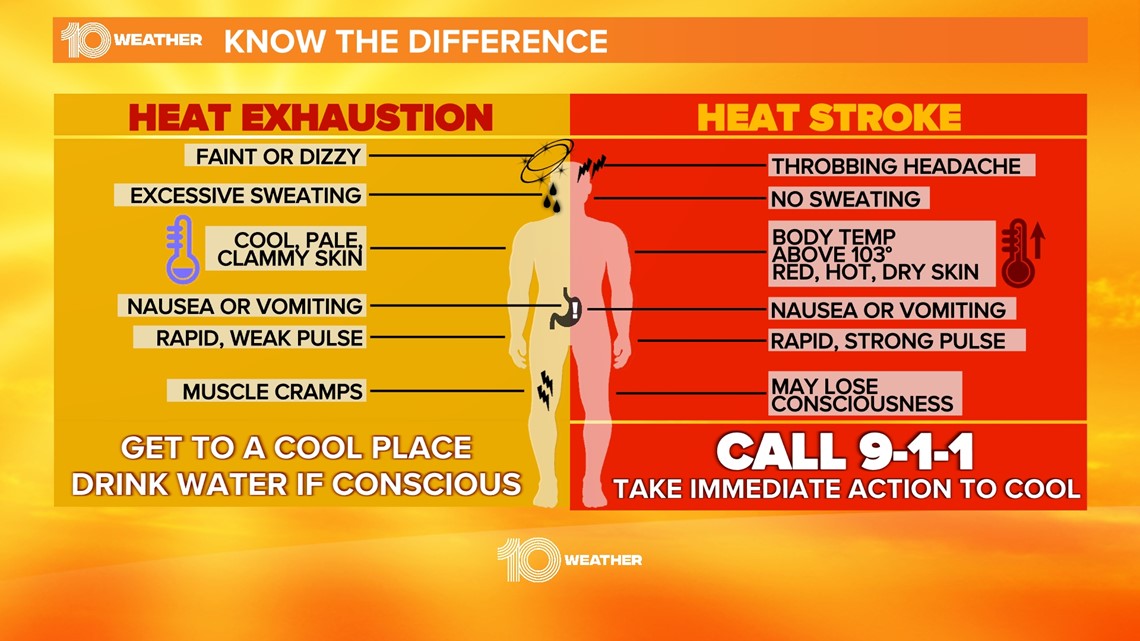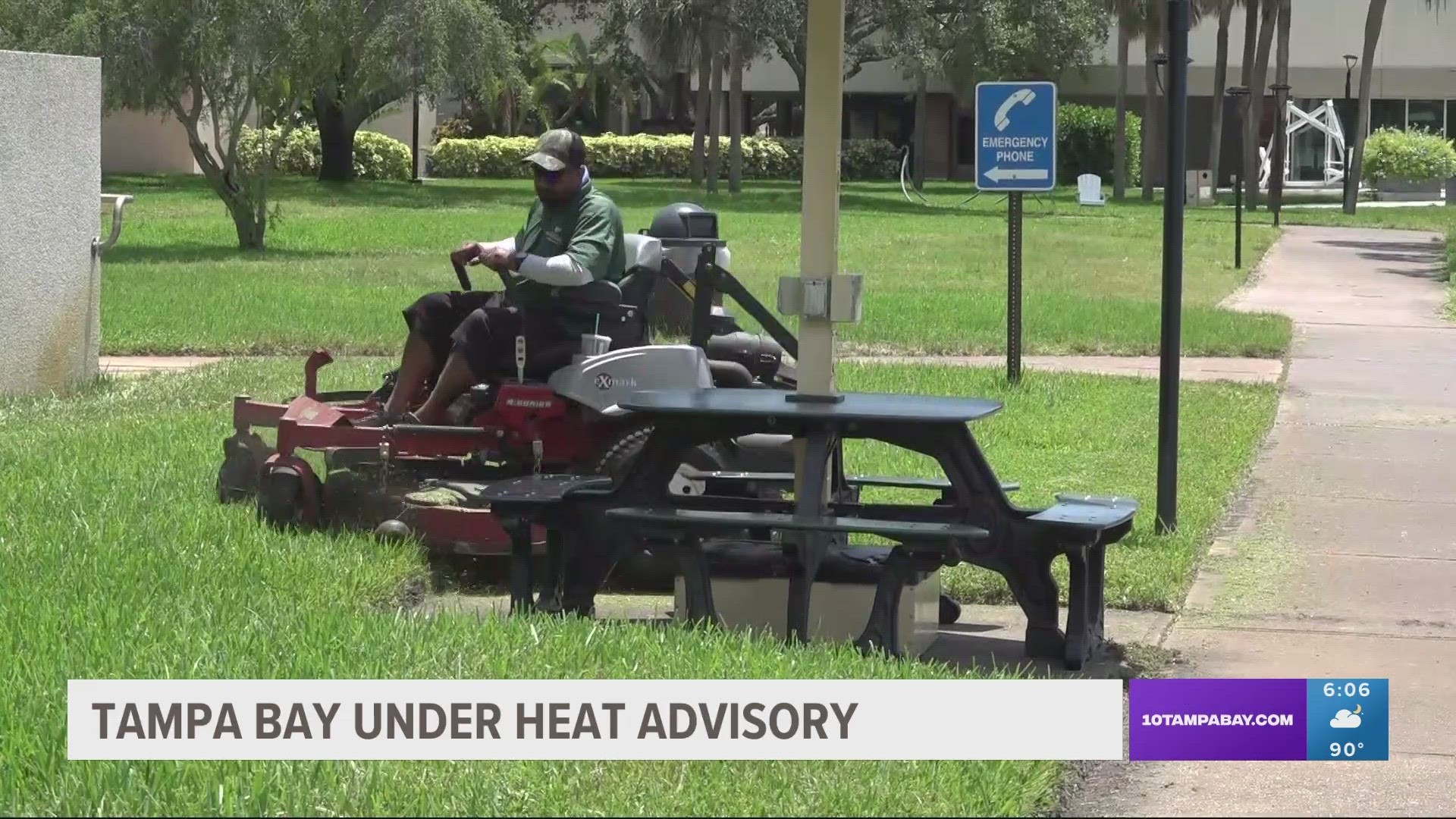TAMPA, Fla. — Tampa has been hot for the past few days, with near-record-breaking temperatures and humidity making it feel like 105-115 F in the shade.
There was a heat advisory in place on July 4, and another on Wednesday, making for some potentially dangerous conditions outside.
But how do you know if you're just feeling the heat of the Florida summer or if it's something more serious — like heat illness?
Symptoms of heat exhaustion include excessive sweating, nausea, a weak pulse, dizziness, muscle cramps and cool, clammy skin.
If this happens, get to a cool place and drink water.
However, if you stop sweating, your skin becomes hot and you develop a strong pulse or throbbing headache, you may be suffering from heat stroke.
Heat stroke is a medical emergency, and you should call 9-1-1 immediately.


"Really looking for that dry mouth, the heart racing, some nauseousness, or if you stop sweating," Dr. Peter Nanda, the chief medical officer of TGH Urgent Care, said. "Sweating is your body's natural cooling method. If you're out and you stop sweating that's a problem as well."
Also, anytime a person acts confused while out in the heat, that can be a sign of something serious. Get them in a cool place, give them fluids and keep an eye on them to make sure they're okay.
What's the best way to avoid heat stroke?
Stay hydrated, and don’t wait until you’re thirsty to drink fluids.
Limit your sun exposure by staying in the shade or using an umbrella. You can also wear sunglasses and a wide-brimmed hat or cap for extra protection.
If you work outside and have access to cool water, consider soaking your shirt and repeating the process every hour or whenever it dries out, Ashley Ward, the director of the Heat Policy Innovation Hub at Duke University, said.
The Associated Press contributed to this report.

